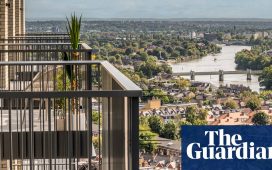Unlock the Editor’s Digest for free
Roula Khalaf, Editor of the FT, selects her favourite stories in this weekly newsletter.
Sometimes the retro can beat the modern, and the classic can outclass the next big thing. Physical stores are back in fashion, despite the march of online retail and super-rapid delivery to our doors. Having suffered for years thanks to the growth of ecommerce, bricks-and-mortar retailers (and those that own their buildings) are enjoying a reversal in their fortunes.
Retail property has suffered a brutal near-decade-long period of value destruction. The UK sector was struggling well before the pandemic hit, as tenants contended with high rents and online competition. The Covid lockdowns hammered another nail into the coffin as many shops shuttered for good. A painful reset of rents and shrinking of overall retail floor space is well under way. The return of dealmaking in the sector this year suggests the worst is over: there is value there for those willing to search for bargains.
British Land sold its one-half stake in the Meadowhall shopping centre in Sheffield for £360mn in May, the largest UK shopping centre deal in many years. That was swiftly followed in June by Land Securities’ acquisition of a further 17.5 per cent stake in the Bluewater centre in Kent. The divergent strategies of the UK’s two largest property groups reflects British Land’s preference for the out-of-town retail parks, which have fared better since the pandemic.
Priced at yields of around 8 per cent, these two shopping centre deals reflect investor caution and continued steep discounts to book value for retail space. Both Meadowhall and Bluewater are top tier assets. Many lower grade shopping centres are quite literally being run into the ground, starved of investment before they are eventually knocked down and replaced.
The sector is still grappling with too much space. But with rents growing at mid single-digits for average quality properties, and with practically zero new supply in the pipeline, the trough in valuations has probably passed.

Successful landlords are having to work harder and smarter to keep occupancy high, notes Rob Virdee of Green Street, and to create a buzz that keeps shoppers coming back and rents growing.
Listed valuations are starting to reflect the change. Hammerson in the UK and Westfield owner Unibail-Rodamco have all outperformed the broader Stoxx 600 Real Estate index in the year to date. With higher quality assets, property yields for the two are between 6 and 7 per cent and discounts to spot estimates of NAV range up to 20 per cent.
Those still seem too high given the improvement in fundamentals. A little retail therapy may be in order.










